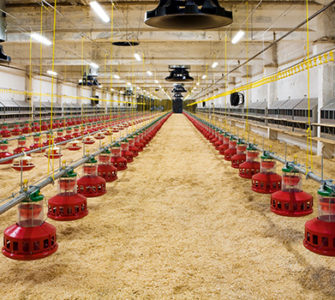Gizzard changes seen in NAE flocks but diagnosis is murky
Raising broilers without antibiotics appears to be affecting the gizzard in ways that aren’t yet fully appreciated, and it’s not clear if the changes observed are true gizzard erosions, Jessica Hockaday, DVM, told Poultry Health Today.
During her residency at Mississippi State University, Hockaday conducted a field study for a poultry company that thought it had a problem with gizzard erosion in its “no antibiotics ever” (NAE) flocks. The company also raised conventional flocks, so Hockaday evaluated a total of 80 gizzards obtained from both flocks.
Compared to gizzards from conventional flocks, gizzards from NAE flocks had more surface bacteria, she reported.
The tough layer made of the carbohydrate-protein complex koilin, which protects the muscles in the gizzard, was thicker and showed sloughing (shedding of dead skin) and edema (excess watery fluid).
Unexpected finding
In addition, gizzards from NAE flocks showed more hemorrhaging without inflammation in the koilin layer — an unexpected finding discovered during microscopic examination — that wasn’t apparent upon gross examination, said Hockaday, now a veterinarian at Aviagen.
Gizzards from conventional flocks had thicker glandular layers and more inflammation compared to the gizzards from NAE flocks, she added.
Were the changes seen in the gizzards of NAE flocks necessarily gizzard erosions? True gizzard erosion has been linked to many possible causes, Hockaday said, including viruses contracted from parent flocks, mycotoxins, nutritional issues and even chemicals such as formaldehyde, used as a disinfectant in the hatchery.
No ulceration
She noted that what she observed in her study doesn’t match textbook descriptions of gizzard erosions. “…they looked grossly like they were gizzard erosions,” but the ulcerations usually seen with erosions were not present.
This raises the question of whether the changes she has observed were, in fact, gizzard erosions or something else altogether, Hockaday said. Management changes, such as transitioning to NAE production or raising broilers in a pasture, might be leading to gizzard issues that aren’t yet obvious, she said.
Perhaps the greatest need is for everyone to “be on the same page” regarding the definition of gizzard erosion and consideration needs to be given to other types of gizzard changes that might result from shifts in production practices, Hockaday said.
Posted on March 21, 2019

















